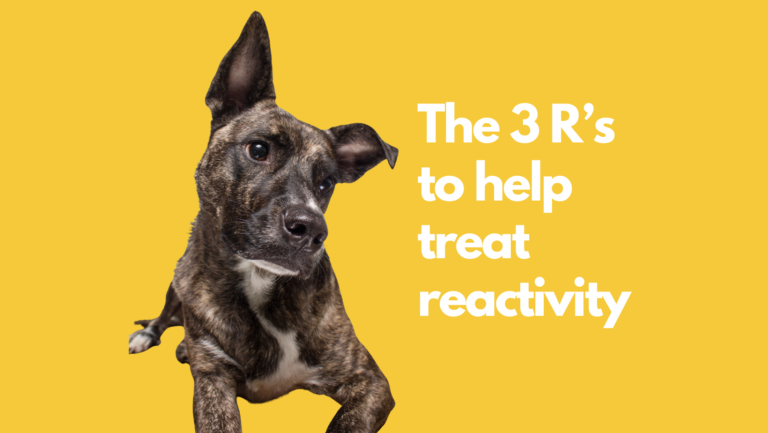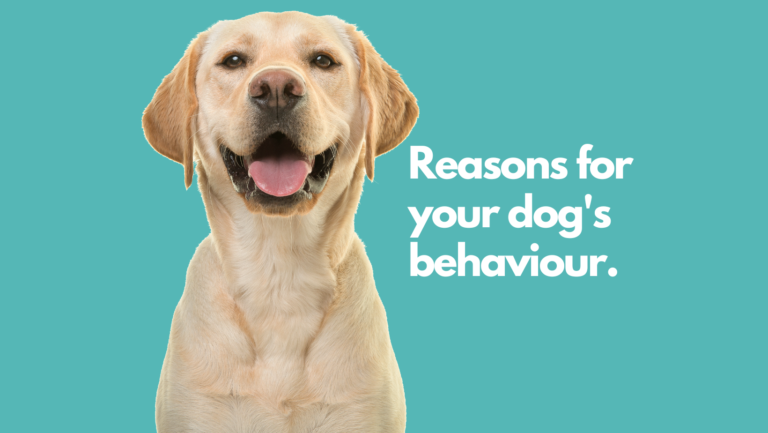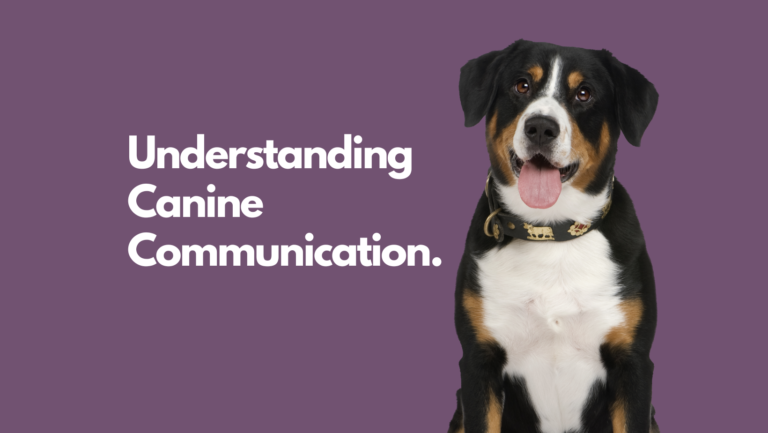Tips on handling your dogs predatory chase drive

Your dog has a reactionary gap known as their critical distance. This is the distance between the trigger and the reaction. The reaction my not always be a fearful one. The reaction can be any behaviour where the dog becomes over aroused/ excited and escalates into reactive behaviour.
Prey chase drive/ or predatory drive is one of them. This is when the dog is not scared of the trigger like the cat, rabbit, bike, bird, or small dogs etc., but still reacts, barks, and lunges out. This emotional state is an involuntary reflex as the movement of ‘prey’ triggers your dog to want to chase.
Sometimes a dog with a strong prey drive can look like aggressive behaviour, however, there is a big difference between predatory drive and aggression. Aggression is mainly driven by emotion. This can be fear reactivity, defensive behaviour and territory/ resource guarding. Prey drive is purely instinctual because of the dogs genetic traits.
This is normal dog behaviour, and you will most likely see a higher predatory chase drive in working, hunting and herding breeds. These prey drive behaviours will show differently in different breeds. For example: Herding breeds have a strong stalk and chase behaviour, while terriers were bred to hunt and kill small game and/ or rodents, and hounds have strong chase instincts.
Keep in mind you cannot train a genetic trait out of a dog just as you cannot train me out of having brown eyes. You can however, use behaviour modification to help reduce the intensity of the behaviour by teaching your dog impulse control.
DO NOT shout, scold or punish your dog for reactivity behaviour towards the other animal /or trigger. By scolding him for reactive behaviour may just suppress it temporarily and cause him to be unpredictable in the future.
Always keep your dog on leash when out in public.
Never leave your dog unsupervised when around children. Children are at high risk of getting bitten by a dog with high predatory drive because their high pitched squeals and running engages in the dogs chase and bite instinct.
The dog is not being bad. The dog is behaving naturally as he does for his species. What may have started as a fun game can escalate very quickly to over arousal/ excitement and a bite.
Encouraging chase games with children is not a good idea and should be avoided.
Prevention is better than a cure!
No 1: Keep your dog safe and secure.
If you have a dog with an extremely high predatory drive, he/ she will need to be safely secured when at home on their own. This is to keep them from potentially escaping and harming another animal or trigger.
Fences would need to be high enough so the dog cannot jump out. The secured area would also need to be large enough, so your dog has freedom to move around happily as well as safe enrichment activities for mental stimulation.
No 2: Teach your dog to watch you and pay attention
The ‘Watch me’ cue will help you get your dog’s attention or redirect your dog’s attention to you. You would be able to get him/ her to watch you if you notice that they are starting to focus on a trigger too much. Direct eye contact can be quite intimidating for most dogs. We want to teach your pup that eye contact is a good thing because good things happen when you make eye contact and focus.
-
Hold the treat in front of your dog’s nose and slowly bring the treat up between your eyes. As your dog makes direct eye contact, mark with the word ‘YESS!’ (this captures the exact moment your dog does what you asked) and feed the treat.
-
Repeat this a couple of times and add the cue ‘Watch Me’ as you bring the treat between your eyes.
-
Once you notice your dog is offering the behaviour, you can repeat the steps with an empty hand but then still using the hand signal to ask to watch. Then reward with a treat when he/ she makes eye contact. Work on 2 second eye contact in the beginning, and as your dog improves, start having him hold his gaze for a longer period of time.
-
Now that you and your dog have mastered this exercise at home, you can now begin to practise in different environments that are more distracting. Practise this enough till you get to the point that your dog watches you no matter where you are and what is going on around them.
*IMPORTANT: Always work at your dog’s pace and start in a safe place where you and your dog are relaxed enough to focus.
No 3: Teach your dog it’s ok to look
This exercise is to help teach your dog stay calm around the trigger. You will be rewarding your dog for doing nothing. Not barking, not pulling around, not being reactive, and not lunging out.
Be observant of your dog and the environment. Let your dog notice a potential trigger on his own at a far distance, and as your dog makes eye contact with a potential trigger, immediately use your maker word ‘YES’/ Click (to capture the moment of your dog not being reactive) and treat –
It is important to remember to do this BEFORE a response happens so your timing needs to be perfect and make sure you always start at a far distance that your dog is comfortable with.
The general idea here is to capture the exact moment (like a picture) of your dog looking at the stimulus and reinforce BEFORE your dog shows any response.
Make sure you keep an eye on your dog’s comfort level – this is called his critical distance. So, if your dog is reacting – you are too close to the trigger and you need to immediately increase the distance away from the stimulus.
The idea is to change the emotional response of reaction to just looking and not reacting. As your dog improves you may notice that he looks at the stimulus then looks back at you anticipating you saying ‘YES’ and treating him. This is great! If you could humanize it, it would almost be like he is saying ‘Look at me, I looked at the cat/ dog/ bike etc… and didn’t react, did you see, did you see?!’.
When you get to this point, you can start to increase the duration of your dog looking at the trigger, and then from there you can SLOWLY start to decrease the distance between your dog and the trigger practising all the steps mentioned above.
Each dog is an individual, so this exercise can take weeks or months. Patience and consistency is key to any counter conditioning training
No 4: Recall training
If you don’t have a 10/10 recall, then it would be advised to put your dog on a long line. This helps reduce the frustration for the dog as they have the opportunity to explore away from you, and you are able to safely manage your dog.
Be careful not to create a negative association with the word ‘Come’. E.g.: “Come! COME!!! Come! Come! Come! Please come!” as well as saying your dog’s name in a negative way.
A poisoned cue is when a negative association is made with the word, so they tend to ignore it. This happens by overusing a word or by repeating the word over and over without your dog responding. If you find this is what’s happening, then you may have to change your cue to ‘Here’.
Recall Tips
No matter what your has done, NEVER punish your dog for coming to you when called. Even if you are frustrated that your dog is taking long to come, or he has dug a hole in your garden. You must ALWAYS praise your dog/ puppy for coming when called.
When you are practicing recalls using HIGH-VALUE treats and/ or squeaky toy to encourage your dog/ puppy to come to you instead of finding something else more interesting. You want your dog to always associate coming to you with something wonderful.
Do not repeat yourself as you may create a poisoned cue. If you find that you are repeating yourself then the environment may be too distracting, or your dog does not understand the skill well enough.
Practice calling your dog daily. Increasing the difficulty at a pace that your dog is ready for.
If you need to call your dog in an emergency like if the gate was open, DO NOT chase and run after your him. Most dog owners make the mistake of walking towards their dog when they call them. Clap your hands and maybe whistle to get your dog’s attention and run away from him/ her. This should encourage your to chase after you. If you chase after your dog, you may encourage a game of running away from you.
Recall Games:
-
While you’re walking with your dog on lead, get his/ her attention and then run backwards and say ‘Come’, after a few paces, stop with a happy soft verbal praise and a treat. Remember to make sure you have your dog’s full attention first before you move backwards.
-
Have high-value treats. Place a treat on the floor and move away from your dog calling him. As your dog gets to you, place a treat on the ground and move away again. Each time your dog comes to you, place treats on the ground and move in a different direction.
-
Randomly call your dog during the day and hugely reward him for coming when called when you are at home!
When your dog becomes a pro at this then start to practise these games safely in quiet environments with little distractions and increasing the distractions slowly over a period of time. Only play this for a short time.
*IMPORTANT: Do Not over practice these games as your puppy may then get bored and despondent. Stop while the going is good.
It is hard work to manage a dog who has a high predatory drive but it can be done if you are vigilant and have realistic expectations of your dog. Always seek out professional help from a qualified force free trainer if you feel that you need some guidance.
Tags
What do you think?
Related Articles

The 3 R’s to help treat reactivity
Training your dog is not just about teaching them to listen and ‘fixing’ unwanted behaviours; it’s about creating positive associations with their environment and building

Reasons for a dogs behaviour
Dogs behave the way they do for many reasons. They do NOT do things deliberately to be stubborn or ‘naughty’, nor do they aim to

What is Dog Body Language?
Our canine friends have an intricate language of nonverbal communication known as body language. Body language is the way a dog uses his or her
